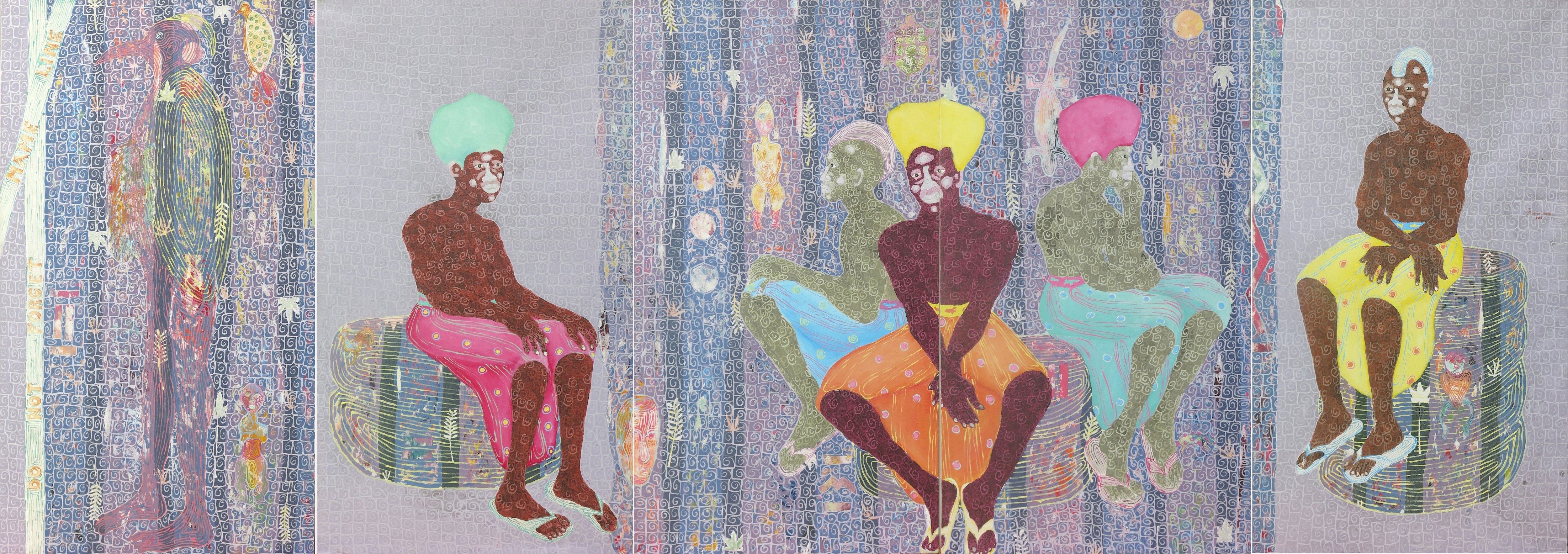
While VIPs melted on Randall’s Island at Frieze New York, the scene at the opening of the 1-54 Contemporary African Art Fair in Red Hook, which runs at Pioneer Works through May 6, was downright breezy.
This is 1-54’s fourth annual edition in New York—one of three international locations for the fair. The oldest edition, founded in 2013, takes place in London, while the newest launched in Marrakesh earlier this year. Each one has a distinct personality; only a handful of galleries participate in all three.
“The New York edition of the fair is special because of the communities of people it draws,” Touria El Glaoui, the founder of 1-54, told artnet News during the VIP preview. “We attract African American artists, as well as those coming from the Caribbean, the African diaspora, and many other African communities living in New York. We also have an existing collector base of African Americans that we’re touching in New York that we don’t have in London or Marrakesh.”
This year’s fair hosts 21 exhibitors and the work of more than 60 artists ranging from the established (Yinka Shonibare) to the emerging (Terrence Musekiwa, Ralph Ziman, and others). These offerings, combined with a slate of particularly strong special projects, combine to produce a fair that is both manageable and endlessly interesting. For those looking to buy, it’s also (somewhat) affordable: prices range from a few thousand dollars to more than $100,000. Most work hovers in the four- to low five-figure range.
There’s plenty to dig into at this year’s 1-54. Here are four standout presentations to get you started.
Phoebe Boswell, Sapar Contemporary
Phoebe Boswell, I Need to Believe the World is Still Beautiful (2018). Courtesy of 1-54 Contemporary African Art Fair.
One of the fair’s special projects, Phoebe Boswell’s I Need to Believe the World is Still Beautiful combines technology and drawing in way that subverts the notably asymmetrical power dynamics of portraiture. Inspired by Adrian Piper’s iconic “Food for the Spirit” series, in which the artist photographed herself nude while she sequestered herself for days, Boswell’s installation features pencil-on-paper drawings of female-identifying people in the artist’s life—friends, family, fellow artists—all standing nude, holding a QR code. The codes, when translated through an app, reveal images and other information that the subjects chose to represent themselves, including biographical details and even, in one case, a poem. The sitters have the power to change or update the linked information whenever they want.
“The drawings aren’t just these passive objects that sit on a wall that I have offered,” Boswell tells artnet News. “The subjects stand there with their own space and have as much agency as possible to speak directly to the viewer about what they want the viewer to know about them.”
Gideon Appah, Gallery 1957
Gideon Appah, Memoirs Through Pokua’s Window (2018). Courtesy of Gallery 1957 and 1-54 Contemporary African Art Fair.
For his solo exhibition at Gallery 1957’s booth, young Ghanaian artist Gideon Appah recreated a familiar space: his grandmother’s house. Push through the wooden beads hanging in the doorway of the booth and you’ll find a variety of artifacts sourced from the home—a threadbare couch, a bar cart, a stack of old family photos, and a basket of home-recorded VHS tapes. Similar quotidian, well-loved objects are represented in drawings and paintings hanging on the walls.
Appah’s work, figurative and laden with expressive gestures, draws from his personal experiences growing up in Accra in the 1980s and ’90s. His collages often incorporate found prints—appropriated posters, family photographs, advertisements—varnished onto canvases and paper. The effect is at once haunting and touching.
Ralph Ziman
Ralph Ziman, SPOEK 1 (2016). Photo: Katrina Sorrentino. Courtesy of 1-54 Contemporary African Art Fair.
Parked in the garden outside of the fair is an old Casspir—a heavy-duty weaponized military vehicle used by South African police during the Apartheid. However, this particular tank doesn’t look like others: nearly every inch of its exterior is covered in bright, striped patterning.
The colorful Casspir is a work by South African artist Ralph Ziman, titled SPOEK 1. Ziman worked with 100 local craftsmen to cloak the tank in hand-made glass beans—approximately 70 million, according to the artist (though it’s hard to know how anyone could count that high). In doing so, he explains, they turned an infamous symbol of violence and subjugation into one of cultural pride and collective healing. It’s also, not coincidentally, street-legal. Ziman and his compatriots have taken the vehicle on a couple of short trips now—and each time, he says, people nearby started pulling over to cheer and take pictures.
Kassou Seydou, Galerie Cecile Fakhoury
Kassou Seydou, L’Eleveur-de-lapins (2017). Courtesy of Galerie Cécile-Fakhoury.
Kassou Seydou is a Senegalese artist who makes large figurative paintings laden with cultural symbols. The most prominent of those symbols is a swirling circular shape—like a letter from an unknown language—which is repeated ad infinitum across all of his works, functioning as a veil or screen to separate the viewer from the canvas. The bright colors and animated characters are still visible through the intricately patterned surface, but they demand more time to make sense of. Approaching one of these paintings is like peering through an ornate iron fence: After your eyes adjust to the obstacle blocking a full view, the picture becomes clear.